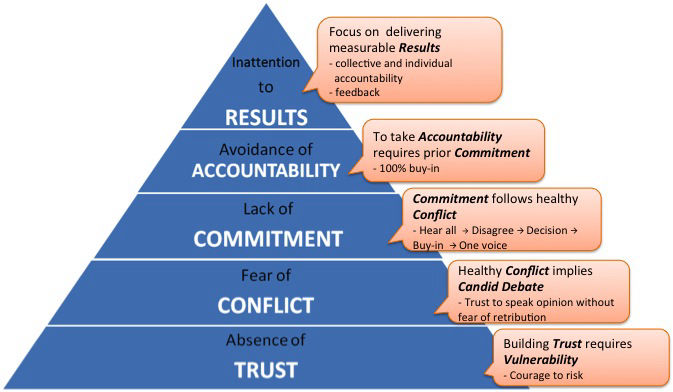
Whether working with teams or individuals, how to encourage greater collaboration and manage conflict are two regular coaching topics.
In a recent team coaching session on managing conflict, a team member, reflecting on the session, spoke about how useful it had been to explore managing conflict with his peers, particularly as he felt they had become “keyboard warriors” whilst working remotely during the pandemic. As keyboard warriors, they weren’t collaborating or managing conflict, but firing rockets at each other from the safety of their home offices. The team member also commented on how coming together to explore healthy conflict had reminded him that his colleagues were human and that such behaviour was not collaborative.
The relationship between collaboration and conflict is an interesting one. If a group of individuals working together are friendly and polite, but uncomfortable with challenging each other, then the collaboration is unlikely to deliver great results. Without managing conflict, the diversity of thought and opinion will not be harnessed and the whole will not be greater than the sum of its parts.
I like Lencioni’s five dysfunctions of a team model (below), which shows the key elements a team needs to embrace to function effectively (or not, if they are dysfunctional), and the importance of a healthy challenge (conflict) in the second tier. This ensures that team members feel they have been able to voice their opinion and challenge constructively before they are ready to commit to a team decision/approach. Once so committed, they have team accountability for the agreed result.

I also like that the first tier is trust, the foundation on which everything else sits. I have explored Trust in a previous blog and looked at the Trust Equation, which proposes that for trust to exist, you need to be credible, reliable, and intimate in your relationships and not self-orientated.

Reflecting on this, you can see why trust is a key enabler to collaboration and managing conflict. If you are credible in what you do, then you are of value to your team members. If you are reliable, they know they can count on you. If you are intimate (closely acquainted, familiar), they are more likely to want to support you and, if you demonstrate you are team-minded rather than self-orientated, they will feel you are supportive of them and will be more likely to act likewise.
Whether working with teams or individuals, asking them to explore how they feel they show up against the four key elements, individually, with each other (in their team) and with other key stakeholders, is a great way to get them to reflect on their strengths and development areas.
When working with teams, doing exercises that involve them sharing more about themselves or practising giving feedback to each other is a great way to develop intimacy and credibility.
Encouraging them to explore areas of known conflict in a safe coaching environment through practising open questions, actively listening to their colleagues and building on each other's ideas is a great way to evidence the power of true collaboration and practice constructive challenge.
As leaders, we need to ensure that we lead by example. If we don’t allow anyone to challenge us or our decisions, what message does that send regarding whether a conflict is welcomed and seen as a positive force for developing ideas? Similarly, if we don’t build trust, deliver on our promises, develop strong working relationships and role model “We not Me”, why would anyone want to collaborate with us?
Whether working with teams or individuals, some initial diagnostic work, such as getting feedback from key stakeholders regarding how they currently show up concerning collaboration and managing conflict is a great starting point for exploring the topics.
It is worth noting that various cultures have different appetites for giving and receiving feedback and constructive challenge. Taking this into account, as a coach, I always check the appropriateness of the coaching approach to the culture and attendees' appetite.
As always, I hope the above has been thought-provoking, and if you have any comments or questions, please get in touch.
From the author:
As coaching is not an advice-giving service, these blogs are not written with the intention of proposing solutions to common leadership challenges. Instead, they are thought pieces with the aim of prompting the reader to think more deeply about the topic and reflect on whether it warrants further exploration, with or without a coach.
If you would like to hear more about coaching and how to make it work for you, feel free to subscribe to my newsletter and to share this blog with anyone that might be interested in learning about executive coaching, how it works and whether it could be of benefit to them.